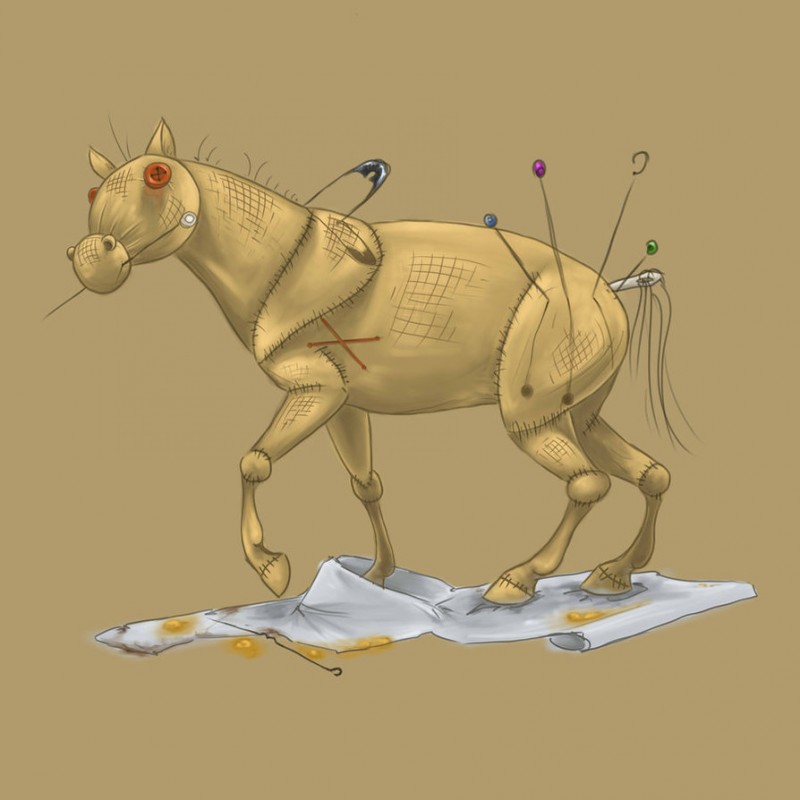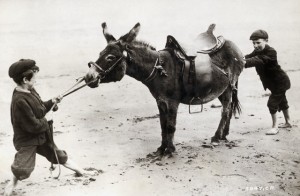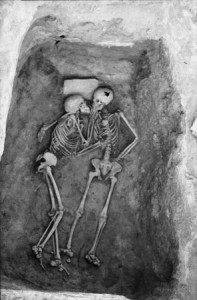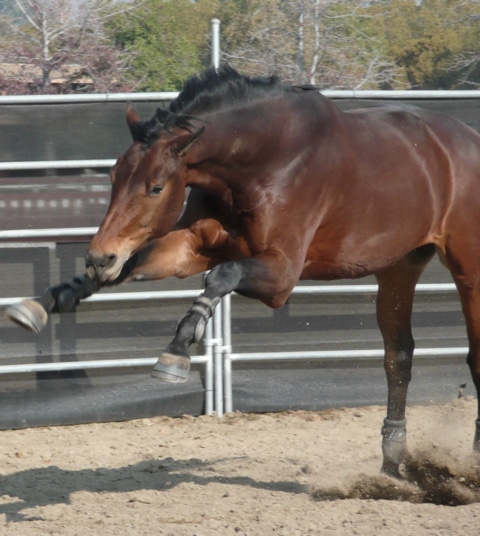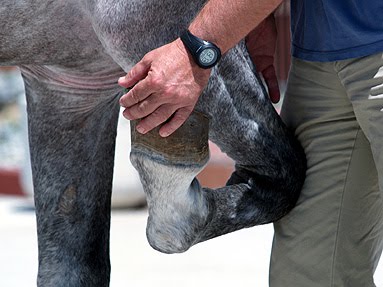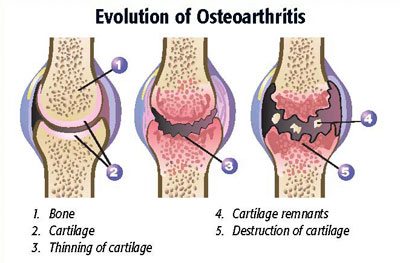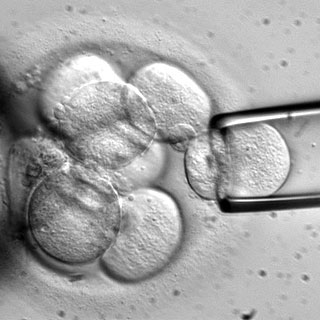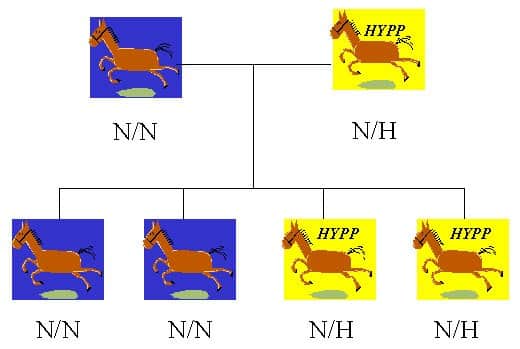 In Part 1 of this two part article – which, if you didn’t read it, you can find if you CLICK HERE – I talked a bit about the horse’s back, back pain, the causes, and the fact that diagnostic testing can be unreliable, or, at least, somewhat perplexing. If that wasn’t enough to confuse you – and particularly given the assurance with which some people may tell you that your horse has back pain – Part 2 is sure to raise all sorts of consternation. Here we go.
In Part 1 of this two part article – which, if you didn’t read it, you can find if you CLICK HERE – I talked a bit about the horse’s back, back pain, the causes, and the fact that diagnostic testing can be unreliable, or, at least, somewhat perplexing. If that wasn’t enough to confuse you – and particularly given the assurance with which some people may tell you that your horse has back pain – Part 2 is sure to raise all sorts of consternation. Here we go.
PROBLEM 3 – The kinds of tests, and their reliability
OK, let’s start by lumping all of the pushing, pulling, prodding, poking and manipulating into the same basket. They all have one thing in common. they all depend on the interpretation of the person doing all of the foregoing. Plus, there are any number of folks that profess to be back pain “specialists,” and about the only thing that you can be sure of is that if you ask a “specialist” in back pain, saddle fitting, “poor circulation,” “constipated qi” (I just made that up, but, heck, it’s not any dumber than some of the other ideas that are out there), etc., your horse is extremely likely to have some sort of a problem that the specialist is uniquely trained to correct (CLICK HERE to read more). So, it’s entirely possible (likely, I think) that the diagnosis of back pain in your horse is going to depend, to a large extent, on the inclinations of the person doing the diagnosis.
It’s also interesting, to note that you even though you may not think your horse has back pain, an “expert” may. At least one study has come to that conclusion (CLICK HERE for the study). And I hardly know what to make of the study. Do riders underdiagnose back pain? Do practitioners diagnose it too much? The study concludes that back pain in horses is hard to evaluate – and we already know that.
So, if poking, pushing, manipulating – whatever – is so fraught with confusion (at least to those who are not true believers in same), what about other methods of diagnosis?
Well, to be sure, X-rays are very commonly used for the diagnosis of back pain. And, in humans, when it comes to the diagnosis of back pain, it’s indisputable that X-rays are generally overused. In fact, in cases of human acute back pain, they’re usually not even recommended (although, apparently, a good number of people aren’t paying attention to the recommendations). But as unreliable as X-rays are for the diagnosis of many cases of human back pain, they’re quite commonly used to try to diagnose the cause of back pain in horses – and even to try to predict the future (in the course of a presale exam). Good luck with that.
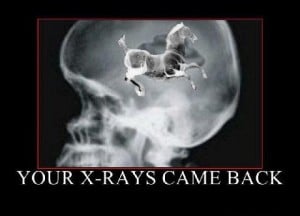 Now, X-rays and horse backs have been studied, to be sure. First off, just like humans, it turns out that normal horses can have all sorts of things that look abnormal (to some) on X-rays. On the other hand, it turns out that most horses with chronic back problems actually have arthritis in the vertebra of the spine, which isn’t particularly good, since it isn’t something that’s particularly treatable (CLICK HERE to read the study, from the UK). And this leads to all sorts of fun possibilities, such as:
Now, X-rays and horse backs have been studied, to be sure. First off, just like humans, it turns out that normal horses can have all sorts of things that look abnormal (to some) on X-rays. On the other hand, it turns out that most horses with chronic back problems actually have arthritis in the vertebra of the spine, which isn’t particularly good, since it isn’t something that’s particularly treatable (CLICK HERE to read the study, from the UK). And this leads to all sorts of fun possibilities, such as:
- Your horse gets a diagnosis of back pain, and doesn’t really have it, which is then supported by “abnormal” X-rays that really don’t mean anything
- Your horse gets a diagnosis of back pain, and really has it, but also has “abnormal” X-rays that don’t really mean anything.
- Your horse doesn’t have back pain at all, but gets called out for having “abnormal” X-rays (such as on a prepurchase exam) that really don’t mean anything
- Your horse has back pain, has abnormal X-rays, and it’s really hard to do much
All of this leads us – inevitably, I suppose, to the diagnosis of “kissing spines.” Honestly, this discussion probably merits an entire article, but you can’t really write an article about back pain in horses without at least mentioning them. Like most back pain stuff, the term “kissing spines” comes to horses from human medicine, where it is used to described a condition known as “Bastrup’s Disease,” where the tops of the vertebrae undergo degenerative changes. In humans, it’s seen mostly in people over 70 years of age. CLICK HERE to read a great summary of Bastrup’s Disease in people.
in horses it’s alleged that when the horse bends his back – especially when he jumps – it causes the tips of the vertebrae to rub together, which, eventually, causes all kinds of problems. Frankly, I’m a bit suspicious of that whole etiology, but that’s another story. What’s curious (to me, anyway) is that the diagnosis of “kissing spines” seems to be pretty regional. That is, it’s commonly diagnosed in some areas, especially in Europe, but it doesn’t seem to be such a popular diagnosis in much of the US.
And it’s the same with treatment. Surgery to cut out the tops of the vertebrae – the “kissing parts,” as it were – is advocated in some areas (accompanied by a lot of post-operative rest) but not so much in others. If human medicine is any guide, surgery doesn’t usually work all that well, and that’s thought to be because some people feel that kissing spine syndrome is not an actual disease, but instead, it’s part of a whole spectrum of degenerative spinal changes. And there’s some support for that idea in horses, as well, because X-rays of the spinal processes are not a good predictor of horse back pain (check out the study that I previously posted). But, if one does go about chopping off the tops of a few vertebrae, the horse will have several months off, during which time the horse may be able to cure whatever was ailing it, if it wasn’t actually the tops of the vertebrae.
 Other commonly used diagnostic techniques are infiltrating suspected areas of the back with local anesthetic (which makes some sense), and nuclear scintigraphy, to try to pick up areas of inflammation (CLICK HERE to read about that process, and others). But, as I said, no single diagnostic tool is a gold standard for coming up with a diagnosis of back pain in the horse. If you really want to determine if your horse has back pain, the most accurate way is probably through a combination of techniques.
Other commonly used diagnostic techniques are infiltrating suspected areas of the back with local anesthetic (which makes some sense), and nuclear scintigraphy, to try to pick up areas of inflammation (CLICK HERE to read about that process, and others). But, as I said, no single diagnostic tool is a gold standard for coming up with a diagnosis of back pain in the horse. If you really want to determine if your horse has back pain, the most accurate way is probably through a combination of techniques.
“But what about all of those machines and devices?” you say. “What about thermography and electroacuscopes and therascopes and X-rays and algometers and applied kinesiology and such?”
Yes, well… no. They’ve just not been shown to be reliable. Certainly unproven. Some are kind of kooky, actually. Cue the flaming wars.
PROBLEM 4 – So many treatments, and they all work!
 Fortunately, treating back pain is really easy. In fact, just about anyone can do it – no need for a veterinary degree, really. And, even better, pretty much every therapy that’s out there is very successful, at least according to advocates.
Fortunately, treating back pain is really easy. In fact, just about anyone can do it – no need for a veterinary degree, really. And, even better, pretty much every therapy that’s out there is very successful, at least according to advocates.
So, rest and medication work. Which medication? Oh, non-steroidal anti-inflammatory drugs, or corticosteroids, or methocarbamol, which is touted as a muscle relaxer, but isn’t (it’s a central nervous system depressant and it doesn’t relax muscle).
Acupuncture works – ask any acupuncturist. Back injections work – maybe they’re really acupuncture? The injections include stuff like vitamin B-12 (for some reason – maybe because it’s red), Sarapin® (an old extract that has been shown several times to do absolutely nothing), and corticosteroids (of course). Where do you give the injections? Well, in the back muscles, or at the acupuncture points – which haven’t been shown to exist as biological entities, by the way – but also in the spaces between the spines of the vertebrae, which is a bit perplexing because there aren’t any spaces between the spines of the vertebrae (CLICK HERE to see that study, which I did, with a lot of help, in 2001).
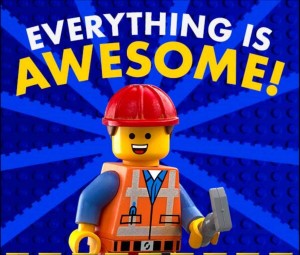 Massage works. Hot packs. Heat lamps. Cold packs. All of the preceding. Treatment with magnetic blankets is mesmerizing. Pulsating electromagnetic field therapy is terrific. Shockwave therapy is great. Don’t forget stretching. Chiropractic is fantastic. Make sure you get a custom saddle. Laser and light therapy is indispensable. Plates that vibrate – plates that are ceramic. What am I leaving out?
Massage works. Hot packs. Heat lamps. Cold packs. All of the preceding. Treatment with magnetic blankets is mesmerizing. Pulsating electromagnetic field therapy is terrific. Shockwave therapy is great. Don’t forget stretching. Chiropractic is fantastic. Make sure you get a custom saddle. Laser and light therapy is indispensable. Plates that vibrate – plates that are ceramic. What am I leaving out?
The fact that so many treatments, which so many different purported mechanisms of action, are alleged to “work” suggests to me that, really, none of them really do, at least, not if the problem is remotely serious. The success of treating back pain mostly depends on what kind of back pain the horse has. If he has some acute muscle soreness – or especially if he’s been diagnosed with back pain, but really doesn’t have back pain – he’s likely to get better no matter what you do. And, in that case, the treatment will almost always get the credit, whether it be the custom saddle, medication, hot packs, cold packs, massage, etc. etc. (That’s one of Ramey’s Rules – the treatment always gets the credit, and the weirder the treatment, the more credit it gets.) If your horse has arthritis of the vertebrae, it’ll likely be a problem, no matter what you do. If your horse has surgery, he’s going to get a lot of time off, which will help, no matter what.
“OK, smart guy,” you say, “What do you do?”
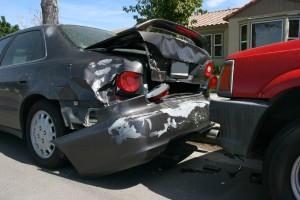 Gulping…. First, I rarely make a diagnosis of back pain in a horse. I’m not saying that horses don’t get back pain – I’m just saying that I don’t think that it’s that common, or, at least, it’s not that common in my experience. And when I do think a horse might have back pain, I try to come up with the diagnosis very carefully.
Gulping…. First, I rarely make a diagnosis of back pain in a horse. I’m not saying that horses don’t get back pain – I’m just saying that I don’t think that it’s that common, or, at least, it’s not that common in my experience. And when I do think a horse might have back pain, I try to come up with the diagnosis very carefully.
If I do suspect that a horse may have back pain, I try to look for a cause. Sometimes it is something like a saddle that doesn’t fit. Perhaps some arthritis somewhere else, like a hind leg, and the back is sore as a result of the horse carrying himself funny. I want to make sure that I am treating the main problem (and the back is often not it, at least not in my experience). When it comes to trying to come up with a diagnosis of back pain, I kind of plod along – really sort of back into the diagnosis (pun intended). The available tests on the horse’s back just aren’t reliable, at least not on an individual basis.
 I always try to get my clients to do simple and inexpensive and non-invasive things before doing any treatment (that’s just me). I think that probably the most underrated of treatments is exercise. I’m not talking about riding, I’m talking about free movement. Horses are meant to move around, and the more they can move around and stretch, the better off they are. I have no problem with “carrot stretches,” although I don’t think they are the key to the kingdom. I do think that saddle fit is reasonably important, but I think that you can do a lot with pads – you don’t necessarily have to run out and immediately pay $6500.00 (or more) for a new custom saddle. And I’ve even had the temerity to suggest to clients that maybe a few riding lessons might help – I’ve even kept a few of those clients.
I always try to get my clients to do simple and inexpensive and non-invasive things before doing any treatment (that’s just me). I think that probably the most underrated of treatments is exercise. I’m not talking about riding, I’m talking about free movement. Horses are meant to move around, and the more they can move around and stretch, the better off they are. I have no problem with “carrot stretches,” although I don’t think they are the key to the kingdom. I do think that saddle fit is reasonably important, but I think that you can do a lot with pads – you don’t necessarily have to run out and immediately pay $6500.00 (or more) for a new custom saddle. And I’ve even had the temerity to suggest to clients that maybe a few riding lessons might help – I’ve even kept a few of those clients.
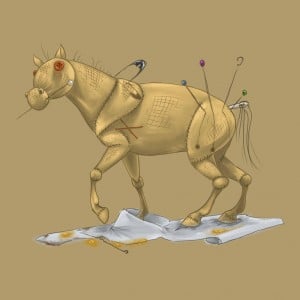 I absolutely loathe silly diagnoses, simple cures, blinking lights, and pretty pictures. For example, one could theoretically have a reasonable discussion about whether moving a horse’s body around helps horses with back pain (I say “theoretically” because such discussions often end in flame wars). But once talk turns to “realigning” the spine, or “adjusting” the poll, or putting a rib back in place, well, it’s time to just stop paying attention. Maybe folks making such diagnoses are doing the right thing for the wrong reason. Frankly, I haven’t seen it, but I’m still leaving the possibility open, even after decades of unproven claims. Which brings up the question – when are those folks going to start proving their claims?
I absolutely loathe silly diagnoses, simple cures, blinking lights, and pretty pictures. For example, one could theoretically have a reasonable discussion about whether moving a horse’s body around helps horses with back pain (I say “theoretically” because such discussions often end in flame wars). But once talk turns to “realigning” the spine, or “adjusting” the poll, or putting a rib back in place, well, it’s time to just stop paying attention. Maybe folks making such diagnoses are doing the right thing for the wrong reason. Frankly, I haven’t seen it, but I’m still leaving the possibility open, even after decades of unproven claims. Which brings up the question – when are those folks going to start proving their claims?
So how do I sum it up? Well, how’s this?
- Back pain shouldn’t be an easy diagnosis – in fact, in many horses it probably shouldn’t be a diagnosis at all
- Some percentage of horses diagnosed with back pain probably don’t really have it
- Some percentage of horses diagnosed with back pain probably have other problems
- Some percentage of horses with back pain get better on their own
- Some percentage of horses treated for back pain got better in spite of their treatment (and the treatment gets the credit)
- Some percentage of horses with back pain aren’t going to get better (those with spinal arthritis)
- There are a lot of things that you can do that don’t cost much of anything, and work well
- There’s a whole lot of hooey out there
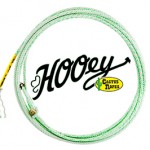 Good luck. One thing’s for sure – back pain can be a real pain (for a lot of different reasons).
Good luck. One thing’s for sure – back pain can be a real pain (for a lot of different reasons).

